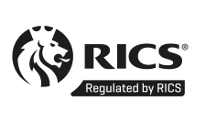What Is a Dilapidations Survey?
A dilapidations survey is aa detailed report on a commercial property’s condition, typically conducted during or at the end of a lease term to assess what repairs a tenant is responsible for. The survey identifies any disrepair or damage that occurred during the tenancy, providing a schedule of dilapidations for the tenant to remedy before handing the property back to the landlord.
This report serves as evidence to help determine a tenant’s financial liability for repairs and can be used to prevent disputes between landlord and tenant. A dilapidation survey for commercial properties ensures both tenants and landlords understand their responsibilities.
Local dilapidation surveyors like Tim Greenwood and Associates will follow the standard approach of requesting all relevant dilapidation documentation from the commercial landlord to ensure that the schedule of dilapidations is an accurate reflection of the tenant’s lease obligations.
Why Have a Dilapidation Survey?
There are several key reasons for landlords to undertake a commercial dilapidation survey:
- Identify disrepair early to maintain property value
- Highlight tenant liability under the lease
- Ensure the property can be re-let quickly
- Allow for budgeting of required works
Tenants benefit from understanding potential liabilities early on. Ultimately, dilapidation surveys provide reassurance for both parties.
Have more questions about the dilapidation survey process? Contact us today to speak to one of our experts.
Required Dilapidation Survey Documents
Documents that are typically required include:-
- The lease between the landlord and the tenant
- Other leases or subleases relevant to the tenant’s occupation and referenced within the lease between the landlord and tenant
- Schedules of condition prepared at the lease commencement, referenced within the main lease.
- Licences for alterations for works proposed to be undertaken by the tenant during the lease terms.
- Other documentation which may be relevant to the tenant’s occupation impacts the tenant’s reinstatement, repairing and redecorating obligations during their occupation.
Providing comprehensive and accurate documentation allows the dilapidations surveyor to prepare a fair and reliable schedule of dilapidations. To understand property compliance further, see our reinstatement cost assessments.
When To Schedule A Dilapidation Survey
Surveys are usually carried out 6-12 months before lease expiry, giving tenants time to remedy issues. They can also be done anytime during the lease if the landlord has concerns.
Landlords should diary dates in advance. Tenants must provide access under most commercial leases. Proactively scheduling a commercial dilapidation survey ensures any disrepair is addressed efficiently, protecting the property’s long-term value.
Protect your investment with our comprehensive schedule of dilapidations service! Contact Tim Greenwood & Associates for a professional service.
What’s Checked In A Dilapidation Survey?
When preparing the schedule of dilapidations, a commercial surveyor will need to undertake a survey of the property and assess the implications of lease liabilities. Any breaches must be clearly identified and reported, with remediations and costs required.
The survey checklist covers:
- Property description: A detailed record of the property’s location, size, and features.
- External elements – roof, windows, doors, drainage etc.
- Internal elements – walls, floors, ceiling, fittings etc.
- Services – plumbing, electrics, heating etc.
- External areas – gardens, car parks etc.
The dilapidations surveyor identifies disrepair caused by the tenant’s failure to maintain the property under the lease. Photographic evidence supports the dilapidation schedule.
The surveyor advises whether issues should be remedied onsite or through financial compensation. Tenants typically must remedy most items before the lease ends.
What a dilapidations survey includes:
- Detailed inspection: A qualified surveyor assesses the physical structure, systems, and any fittings or fixtures.
- Documentation: The report includes written records, measurements, and visual evidence such as high-resolution photos documenting the condition of various parts of the building, including walls, floors, and exterior areas. Videos may also be used to document the condition.
- Comparison with lease obligations: The surveyor compares the current condition against the lease agreement and the property’s condition at the start of the lease (often via a schedule of condition).
- List of required work: The report outlines specific repairs and rectifications needed to meet the lease standards.
- Estimated costs and timescales: The report may include an estimate of the costs and timeline for the required works.
Appointing A Dilapidation Surveyor
Surveys should be conducted by qualified chartered surveyors experienced in this field, carrying out inspections in line with industry guidance. Appointing an independent dilapidations surveyor ensures a fair assessment and compliance with all lease terms.
Appointing an independent surveyor provides a fair assessment. Landlords and tenants can each appoint their own surveyor if required.
While landlords initially bear the survey cost, this can often be passed on to tenants under the lease terms.
It’s crucial that the commercial dilapidation surveyor preparing the schedule of dilapidations is provided with all relevant documentation to ensure the claim is accurate and fair. Should the lease details or supporting documents be unavailable or insufficient, it’s widely recommended that tenants provide copies so that the landlord’s surveyor can prepare the claim accordingly.
Arrange a consultation with our dilapidations specialists today by calling 01737 829070.
FAQs
How long are dilapidation reports valid?
Reports detail the property’s condition at that time. Tenants remain liable for further disrepair until the lease expires, so follow-up surveys are recommended.
What if the tenant disagrees with the findings?
Both parties must act reasonably. Tenants can request a second opinion and negotiate a settlement, avoiding court action.
What happens if dilapidations are ignored?
The landlord can pursue legal action to recover repair costs and lost rental income from the property being unlettable.
Who manages dilapidation works?
Tenants usually complete the necessary remedial works outlined in the schedule of dilapidations before the lease ends. Alternatively, landlords may manage the works and recover costs from the tenant, as specified in the lease.
Contact us today on 01737 829070 to discuss how we can assist with your dilapidation survey requirements.
